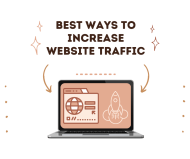Switch From Universal Analytics to Google Analytics 4

Google analytics is by far the best web analytics tool for website owners to track and report website traffic. Currently, Google Analytics allows users to use an older version of analytics called Universal Analytics. But by June 2023, Universal Analytics will cease to function as a Google Analytics tool.
Google has made it mandatory for users to use its latest generation of analytics tool, Google Analytics 4. If you are still using Universal Analytics, then you must switch from universal analytics to analytics 4 as soon as possible. With the help of this article, let us get a more comprehensive understanding about this topic.
Table of Content:
1. The Future of Analytics: Google Analytics 4
2. Benefits of Google Analytics 4
3. Major Difference Between Universal Analytics and Google Analytics 4
4. Google Analytics 4 Migration Process
1. The Future of Analytics: Google Analytics 4
Google Analytics 4 is the latest updated version of Google Analytics that was developed to collect both web and app data effectively. Google has made it mandatory for users to migrate from universal analytics to analytics 4. It has new features and benefits which were absent from the previous version of Google Analytics. It is advisable to make the switch as soon as possible to continue making the most of the analytics service of Google.
2. Benefits of Google Analytics 4
Google Analytics 4 brings forth several new features and benefits that help the users greatly. Few of the benefits are listed below:
1- App and Web Data Collection
It allows users to collect both app and web data, unlike Universal Analytics which had issues tracking mobile performance of customers. This feature will help make analysis easier and budget friendly.
2- Advanced Reporting Interface
In GA4, the reporting interface is advanced as compared to the Universal Analytics reporting. One of the major reasons to switch from universal analytics to analytics 4 is that with Google Analytics 4, you can access more detailed reports as it tracks the behaviour of users as a separate event.
3- Cross-platform Tracking Available
With the help of a unique tracking ID, GA4 allows you to track the user data not just across devices but various marketing platforms. This has been made possible by the technique of cross-device tracking which is being used by GA4.
4- Event Tracking Enabled
The event tracking model of Universal Analytics made it hard for developers to manage and track the events. But with the new and fresh approach of event tracking by Google Analytics 4, tracking events has become easier and more flexible for the developers.
5- Solves The Issue of Cookies Blocking
With the advent of GDPR laws and cookies being blocked by browsers, Google Analytics 4 was designed keeping privacy in mind. The advanced features of predictive metrics and machine learning has made tracking users possible even if they have block cookies for your site.
6- Data Collection
In the case of Google Analytics 4, data is collected and sent through the server but each tracking code is connected separately to the server. This helps in reducing the loss of data due to any code or server errors. It is highly advisable to switch from universal analytics to analytics 4.
3. Major Difference Between Universal Analytics and Google Analytics 4
4. Google Analytics 4 Migration Process
Follow these steps if you are already using Universal Analytics but want to make a switch to Google Analytics 4.
1- Start by Creating and Launching a Google Analytics 4 Property
If you are planning to migrate from universal analytics to analytics 4, then you should start by creating a new Google Analytics 4 property. After you have created the new property, make sure to configure it so that the old data from your existing Google Analytics account can be transferred into your new one.
Log into your Google Analytics account and go to Admin.
Select Create Property and then choose the option of GA4.
Follow the steps and launch your new Google Analytics 4 property in less than 5 minutes.
2- Make Sure to Install the Global Site Tag
After the creation of your Google Analytics 4 property, make sure to install the Global Site Tag (gtag.js), which is a JavaScript tagging framework allowing you to collect and send user data to Google Analytics.
Once more go to the Admin section and then follow the steps. Admin>Property>Tracking Info>Global Site Tag.
Copy-paste the code into your website’s code.
The next major step is to verify that the tag is working properly for your website.
For verifying, install any free Chrome extension from Google such as Google Tag Assistant or GA Debugger.
3- You Can Transfer Your Existing Data
One of the optional processes after you migrate from universal analytics to analytics 4 is to transfer your existing data to Google Analytics 4. In order to migrate your old data, you can follow the following. Admin> Property> Data Migration. After transferring the useful data to your new GA4 account, you can choose to delete your Universal Analytics property from property settings.
We hope you have understood the importance of switching to the updated and advanced Google Analytics 4 before Google phases out the existing Universal Analytics tool. If you have already made the migration, then you should sit back and enjoy the features of GA4, otherwise take some time out and make the switch now!



